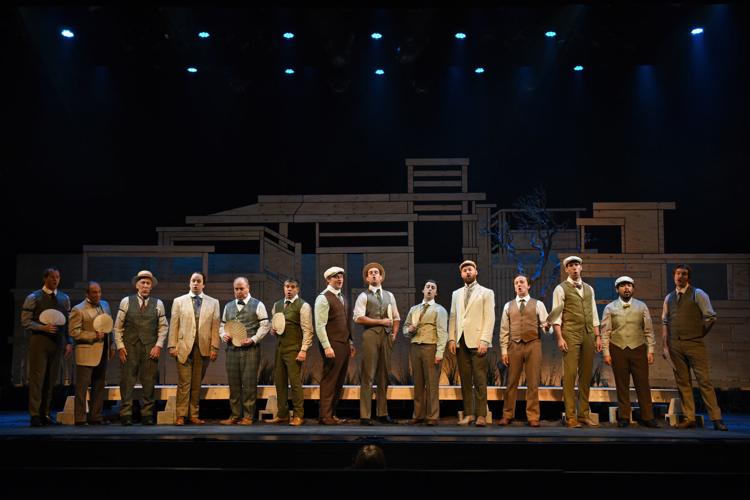The story of the massacre at Frank Lloyd Wright’s Wisconsin estate Taliesin is tailor-made for opera.
It has everything: Greed, envy, adultery, bloody murder.
Which is why composer Daron Hagen mined the story when he was commissioned by the Madison Opera to write a work centered on the famous architect.
But in the new Taliesin West version of “Shining Brow” — paying homage to Wright’s Taliesin estate in Scottsdale — that was composed for the Arizona Opera, the bloody murder was done behind closed curtains. No screaming when Wright’s lover Mamah Cheney and her two young children are brutally killed by a hatchet-wielding madman. No cries of desperation from the workers trapped inside the home that the murderer, Wright’s chef and handyman, set on fire in an attempt to destroy Wright.
We learn of the fire and the deaths from a messenger. The chef’s role is alluded to, but never fully spelled out.
What could have been this incredibly dramatic operatic moment fell sadly flat, especially for those among the nearly full house at the Temple of Music and Art who didn’t know the full story.
Arizona Opera mounted the first of two performances of “Shining Brow” Saturday to open the company’s 2019-20 season. A second performance was held Sunday afternoon.
The Taliesin West version of “Shining Brow” was scaled down to 100 minutes from its original two hours. The work also was centered on men with only three female roles. Composer Hagen said the revisions place more of an emphasis on the subjugation of women by men.
The opera tells the story of Wright’s highly public extramarital affair with Mamah Cheney (brought to life by soaring soprano Laura Wilde), who left her husband and moved in with Wright (mellow-voiced baritone John Moore). The couple lived in Europe for a spell before settling into Wright’s estate outside Madison, Wisconsin.
But it’s equally a story of professional envy and greed and how Wright became so obsessed with his own success and feeding his ego that he neglected his wife (the sublime mezzo-soprano Katherine Beck) and disregarded his employees and closest confidants, including his mentor Louis Sullivan (soaring tenor Bille Bruley, whose Sullivan was a mixed bag of anger and compassion).
Stage director Chas Rader-Shieber dressed the scenes in khaki tan, with workers toiling at design easels in near robotic fashion. The all-male chorus, which was pretty terrific in their multiple roles, also played the townspeople and a gaggle of reporters grilling Wright on his infidelities and art. The only woman among them was the maid, who, for the most part, was seen and not heard.
It wasn’t until the final scenes that we heard from soprano Cadie Jordan, an incredibly talented and wonderfully voiced member of Arizona Opera’s Marion Roose Pullin Studio Artist Program. Her maid was nearly mad from shock, flailing about the carnage trying to get Wright to understand the gravity of the crime she had witnessed. It was one of the most dramatic scenes of the night.
Although we never saw the bloody murders, conductor Lidiya Yankovskaya, Chicago Opera Theater’s music director, accentuated shattering brass and quivering strings that foreshadowed what was going on behind the curtain. She led the orchestra with energy and technical precision to bring out the subtleties and excitement of Hagen’s cinematic and melodic score, which had delightful nods to jazz.





